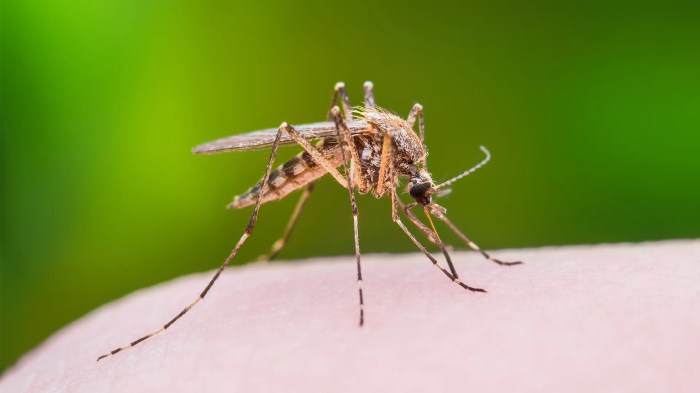Pestered by flies and mosquitoes is a ubiquitous issue that plagues individuals worldwide, causing discomfort, irritation, and even health concerns. This article delves into the intricacies of fly and mosquito infestation, exploring the factors that attract these pests, their behaviors, and the most effective methods for repelling and controlling them.
Understanding the biology and habits of flies and mosquitoes is paramount in developing a comprehensive pest control strategy. Environmental factors such as stagnant water, decaying organic matter, and warm temperatures provide ideal breeding grounds for these insects. Additionally, their ability to transmit diseases underscores the importance of implementing effective control measures.
Identify the Causes of Fly and Mosquito Infestation
The presence of flies and mosquitoes can be a nuisance and a potential health hazard. Understanding the factors that attract these pests is crucial for developing effective control strategies.
Environmental Factors
- Stagnant water: Flies and mosquitoes require water to breed and lay their eggs. Standing water in containers, puddles, and clogged gutters provides an ideal breeding ground.
- Decaying organic matter: Flies are attracted to rotting food, animal waste, and other decaying materials, which provide a food source for both adult flies and their larvae.
- Warm temperatures: Flies and mosquitoes are most active during warm weather, as they require warmth to survive and reproduce.
Behavioral and Habitual Factors
- Food sources: Flies and mosquitoes feed on a wide range of food sources, including human blood, plant nectar, and decaying organic matter. Their ability to locate and exploit these food sources contributes to their ability to pester humans.
- Breeding habits: Flies and mosquitoes lay their eggs in moist environments, such as stagnant water or decaying organic matter. Their ability to find and utilize these breeding sites is essential for their population growth.
- Dispersal mechanisms: Flies and mosquitoes have efficient dispersal mechanisms, allowing them to travel significant distances in search of food and breeding sites. Their ability to fly and their small size enable them to easily enter and infest homes and other structures.
Explore Methods for Repelling Flies and Mosquitoes

Various methods can be employed to repel flies and mosquitoes, ranging from natural to chemical approaches.
Natural Repellents
- Essential oils: Certain essential oils, such as peppermint, eucalyptus, and lemongrass, have natural repellent properties that can deter flies and mosquitoes.
- Plants: Planting certain plants, such as basil, rosemary, and marigolds, around the home can help repel flies and mosquitoes due to their strong scents.
- Physical barriers: Installing screens on windows and doors, using mosquito nets, and sealing cracks and holes can prevent flies and mosquitoes from entering homes and other structures.
Chemical Repellents
- Insect repellents: Commercial insect repellents containing DEET, picaridin, or IR3535 can effectively repel flies and mosquitoes. These repellents work by creating a chemical barrier on the skin that deters pests.
- Insecticides: Insecticides can be used to kill flies and mosquitoes. However, it is important to use these products carefully and according to the manufacturer’s instructions to avoid potential health and environmental risks.
DIY Repellent Recipes
- Vinegar solution: A mixture of equal parts vinegar and water can be used as a natural fly repellent. Spraying this solution around the home can deter flies.
- Citrus peels: Placing citrus peels, such as orange or lemon peels, around the home can repel mosquitoes due to their strong citrus scent.
- Garlic spray: A spray made from crushed garlic mixed with water can be used as a natural mosquito repellent. The strong odor of garlic is effective in deterring these pests.
Design a Comprehensive Pest Control Strategy

Developing a comprehensive pest control strategy for flies and mosquitoes involves several key steps.
Identify the Source of the Infestation
- Conduct a thorough inspection of the property to identify potential breeding sites for flies and mosquitoes.
- Look for sources of standing water, decaying organic matter, and other attractants that may be contributing to the infestation.
Implement Targeted Control Measures
- Remove or eliminate breeding sites by emptying standing water, cleaning up decaying organic matter, and sealing cracks and holes.
- Use natural or chemical repellents to deter flies and mosquitoes from entering the home or other structures.
- Apply insecticides or traps to kill existing pests and prevent further infestations.
Monitor and Evaluate
- Regularly monitor the effectiveness of the pest control measures and make adjustments as needed.
- Inspect the property for signs of re-infestation and take appropriate action to prevent further problems.
Create a Visual Guide to Fly and Mosquito Identification: Pestered By Flies And Mosquitoes
A visual guide can aid in the identification of different species of flies and mosquitoes.
Infographic or Table
- Design an infographic or table that includes clear images or illustrations of different fly and mosquito species.
- Provide detailed descriptions of their physical characteristics, behaviors, and habitats.
Key Characteristics, Pestered by flies and mosquitoes
- Include information on the size, shape, and color of different fly and mosquito species.
- Describe their wing patterns, mouthparts, and other distinguishing features.
Essential Questionnaire
What are the most effective natural fly and mosquito repellents?
Natural repellents such as citronella, lavender, peppermint, and tea tree oil have been shown to be effective in deterring flies and mosquitoes.
How can I identify different species of flies and mosquitoes?
Refer to visual guides or consult with pest control professionals to accurately identify fly and mosquito species based on their physical characteristics, behaviors, and habitats.
What are the key steps involved in creating a comprehensive pest control strategy for flies and mosquitoes?
A comprehensive pest control strategy involves identifying the source of the infestation, implementing targeted control measures (e.g., traps, insecticides, biological control), and adopting preventive measures to minimize future infestations.